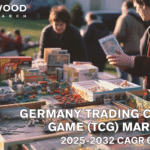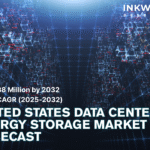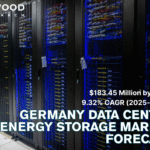CHINA BLUE AMMONIA MARKET FORECAST 2024-2050
SCOPE OF THE REPORT
China Blue Ammonia Market by Technology (Steam Methane Reforming, Autothermal Reforming, Gas Partial Oxidation) Market by Application (Agriculture, Maritime Transport, Hydrogen Carrier, Power Generation, Other Applications)
REPORTS » ENVIRONMENT » ENVIRONMENT SERVICES » CHINA BLUE AMMONIA MARKET FORECAST 2024-2050
MARKET OVERVIEW
The China blue ammonia market is valued at $26.41 million in 2024 and is set to garner $19794.01 million by 2050, growing at a CAGR of 52.66% during 2025-2030, 38.64% during 2030-2035, 25.55% during 2035-2040, 17.00% during 2040-2045, and 9.34% during 2045-2050.
China, the leading global emitter of greenhouse gases, is proactively pursuing cleaner energy sources to address climate change. Blue ammonia, generated through low-carbon or carbon-neutral methods, has emerged as a potential catalyst in China’s efforts to decarbonize. Despite being in its early stages, the Chinese blue ammonia market is experiencing rapid expansion, fueled by government backing and ambitious climate targets. In contrast to the United States, China’s current demand for blue ammonia is primarily domestic, mainly for applications such as fertilizer production and industry.

To Know More About This Report, Request a Free Sample Copy
Furthermore, the 14th Five-Year Plan of China explicitly highlights the development of hydrogen-based clean fuels, including blue ammonia, as a major national priority. The Baotou demonstration project, with an estimated value of approximately $230 million, is projected to produce 390,000 tons of blue ammonia annually, commencing in 2025. The facility will boast a blue ammonia production capacity of 3,000 tons per day.
The China blue ammonia market segmentation includes application and technology. The technology segment includes steam methane reforming (SMR), autothermal reforming (ATR), and gas partial oxidation.
Gas partial oxidation (GPO) is deployed in the creation of blue ammonia, characterized by its low carbon footprint. Acknowledged as a potential clean energy carrier and fuel source, blue ammonia finds applications in power generation, industrial feedstock, transportation, and various other uses. GPO entails the partial combustion of natural gas with oxygen, resulting in a blend of hydrogen and carbon monoxide, commonly known as syngas. This syngas is subsequently transformed into blue ammonia through a reaction with nitrogen, while the accompanying carbon dioxide by-product is captured and stored.
When compared to alternative blue ammonia production methods like steam methane reforming (SMR) and autothermal reforming (ATR), GPO boasts certain advantages. It necessitates less steam and heat input, accommodating a broader range of natural gas compositions. Moreover, GPO yields a higher hydrogen-to-carbon monoxide ratio, diminishing the requirement for additional water-gas shift reactors. Nevertheless, GPO is not without its drawbacks, including elevated capital and operating costs, reduced efficiency, and increased oxygen consumption.
Autothermal Reforming (ATR) is a modified form of Steam Methane Reforming (SMR) employed in the generation of hydrogen for blue ammonia synthesis. In contrast to SMR, which depends on external heat sources such as furnaces, ATR produces its heat internally via a regulated partial oxidation reaction of methane with pure oxygen. This self-heating characteristic removes the necessity for external fuel and lowers the overall energy consumption.
Some of the leading companies in the China blue ammonia market are Ma’aden, Nutrien Limited, POSCO Holdings Inc, etc.
POSCO Holdings Inc (POSCO) operates as a globally integrated steel manufacturing company specializing in the production and marketing of steel rolled products and plates. The company provides a wide range of products, including hot-rolled and cold-rolled items, wire rods, plates, silicon steel sheets, and stainless-steel products. These offerings cater to diverse industries such as automotive, shipbuilding, home appliances, engineering, and machinery.
In addition to its core manufacturing activities, POSCO extends its services to encompass the planning, designing, and construction of industrial plants, civil engineering projects, as well as commercial and residential buildings. The company also engages in various other operations, including power generation, trading of steel and raw materials, and network and system integration. POSCO’s global presence spans across Asia-Pacific, Europe, the Middle East, Africa, and the Americas, with headquarters in Pohang-si, South Korea.
REPORT SYNOPSIS
| REPORT SCOPE | DETAILS |
|---|---|
| Market Forecast Years | 2024-2050 |
| Base Year | 2023 |
| Market Historical Years | 2020-2022 |
| Forecast Units | Revenue ($ Million) |
| Segments Analyzed | Technology and Application |
| Countries Analyzed | China |
| Companies Analyzed | ExxonMobil, Ma’aden, Nutrien Limited, POSCO Holdings Inc, Shell, Yara International |
TABLE OF CONTENTS
RESEARCH SCOPE & METHODOLOGY
- STUDY OBJECTIVES
- METHODOLOGY
- ASSUMPTIONS & LIMITATIONS
EXECUTIVE SUMMARY
- MARKET SIZE & ESTIMATES
- COUNTRY SNAPSHOT
- COUNTRY ANALYSIS
- SCOPE OF STUDY
- MAJOR MARKET FINDINGS
- STEAM METHANE REFORMING (SMR) IS THE DOMINANT INDUSTRIAL PROCESS FOR PRODUCING HYDROGEN
- AGRICULTURE SECTOR IS ANTICIPATED TO ENCOMPASS MAJOR BLUE AMMONIA USAGE
MARKET DYNAMICS
- KEY DRIVERS
- SURGING EFFORTS FOR CARBON EMISSION REDUCTION
- INNOVATIVE INFRASTRUCTURE AND SUSTAINABLE SCALING OF BLUE AMMONIA PRODUCTION
- ADVANCING THE HYDROGEN ECONOMY FOR SUSTAINABLE ENERGY SOLUTIONS
- KEY RESTRAINTS
- COST CHALLENGES IN BLUE AMMONIA COMMERCIALIZATION
- LIMITED PUBLIC AWARENESS AND PROPRIETARY CONSTRAINTS
- CHALLENGES IN AMMONIA CLASSIFICATION AND STANDARD ADOPTION
- KEY DRIVERS
KEY ANALYTICS
- KEY MARKET TRENDS
- DECARBONIZING SOLUTIONS ACROSS AGRICULTURE AND OTHER INDUSTRIES
- ADVANCEMENTS IN TECHNOLOGY
- POLICY AND REGULATORY LANDSCAPE
- PESTLE ANALYSIS
- POLITICAL
- ECONOMICAL
- SOCIAL
- TECHNOLOGICAL
- LEGAL
- ENVIRONMENTAL
- PORTER’S FIVE FORCES ANALYSIS
- BUYERS POWER
- SUPPLIERS POWER
- SUBSTITUTION
- NEW ENTRANTS
- INDUSTRY RIVALRY
- MARKET CONCENTRATION ANALYSIS
- VALUE CHAIN ANALYSIS
- NATURAL GAS PRODUCTION
- AMMONIA PRODUCTION
- CARBON CAPTURE AND STORAGE (CCS)
- TRANSPORTATION AND STORAGE
- END-USE
- KEY BUYING CRITERIA
- COST
- CARBON FOOTPRINT
- INFRASTRUCTURE
- REGULATION
- SUPPLY CHAIN
- KEY MARKET TRENDS
MARKET BY TECHNOLOGY
- STEAM METHANE REFORMING (SMR)
- MARKET FORECAST FIGURE
- SEGMENT ANALYSIS
- AUTOTHERMAL REFORMING (ATR)
- MARKET FORECAST FIGURE
- SEGMENT ANALYSIS
- GAS PARTIAL OXIDATION
- MARKET FORECAST FIGURE
- SEGMENT ANALYSIS
- STEAM METHANE REFORMING (SMR)
MARKET BY APPLICATION
- AGRICULTURE
- MARKET FORECAST FIGURE
- SEGMENT ANALYSIS
- MARITIME TRANSPORT
- MARKET FORECAST FIGURE
- SEGMENT ANALYSIS
- HYDROGEN CARRIER
- MARKET FORECAST FIGURE
- SEGMENT ANALYSIS
- POWER GENERATION
- MARKET FORECAST FIGURE
- SEGMENT ANALYSIS
- OTHER APPLICATIONS
- MARKET FORECAST FIGURE
- SEGMENT ANALYSIS
- AGRICULTURE
COMPETITIVE LANDSCAPE
- KEY STRATEGIC DEVELOPMENTS
- MERGERS & ACQUISITIONS
- PRODUCT LAUNCHES & DEVELOPMENTS
- PARTNERSHIPS & AGREEMENTS
- COMPANY PROFILES
- EXXONMOBIL
- COMPANY OVERVIEW
- STRENGTHS & CHALLENGES
- MA’ADEN
- COMPANY OVERVIEW
- STRENGTHS & CHALLENGES
- NUTRIEN LIMITED
- COMPANY OVERVIEW
- STRENGTHS & CHALLENGES
- POSCO HOLDINGS INC.
- COMPANY OVERVIEW
- STRENGTHS & CHALLENGES
- SHELL
- COMPANY OVERVIEW
- STRENGTHS & CHALLENGES
- YARA INTERNATIONAL
- COMPANY OVERVIEW
- STRENGTHS & CHALLENGES
- EXXONMOBIL
- KEY STRATEGIC DEVELOPMENTS
LIST OF TABLES
TABLE 1: MARKET SNAPSHOT – BLUE AMMONIA
TABLE 2: CHINA BLUE AMMONIA MARKET, BY TECHNOLOGY, FORECAST YEARS, 2024-2050 (IN $ MILLION)
TABLE 3: CHINA BLUE AMMONIA MARKET, BY APPLICATION, FORECAST YEARS, 2024-2050 (IN $ MILLION)
TABLE 4: LIST OF MERGERS & ACQUISITIONS
TABLE 5: LIST OF PRODUCT LAUNCHES & DEVELOPMENTS
TABLE 6: LIST OF PARTNERSHIPS & AGREEMENTS
LIST OF FIGURES
FIGURE 1: KEY MARKET TRENDS
FIGURE 2: PORTER’S FIVE FORCES ANALYSIS
FIGURE 3: MARKET CONCENTRATION ANALYSIS
FIGURE 4: CHINA BLUE AMMONIA MARKET, GROWTH POTENTIAL, BY TECHNOLOGY, IN 2024
FIGURE 5: CHINA BLUE AMMONIA MARKET, BY STEAM METHANE REFORMING (SMR), 2024-2050 (IN $ MILLION)
FIGURE 6: CHINA BLUE AMMONIA MARKET, BY AUTOTHERMAL REFORMING (ATR), 2024-2050 (IN $ MILLION)
FIGURE 7: CHINA BLUE AMMONIA MARKET, BY GAS PARTIAL OXIDATION, 2024-2050 (IN $ MILLION)
FIGURE 8: CHINA BLUE AMMONIA MARKET, GROWTH POTENTIAL, BY APPLICATION, IN 2024
FIGURE 9: CHINA BLUE AMMONIA MARKET, BY AGRICULTURE, 2024-2050 (IN $ MILLION)
FIGURE 10: CHINA BLUE AMMONIA MARKET, BY MARITIME TRANSPORT, 2024-2050 (IN $ MILLION)
FIGURE 11: CHINA BLUE AMMONIA MARKET, BY HYDROGEN CARRIER, 2024-2050 (IN $ MILLION)
FIGURE 12: CHINA BLUE AMMONIA MARKET, BY POWER GENERATION, 2024-2050 (IN $ MILLION)
FIGURE 13: CHINA BLUE AMMONIA MARKET, BY OTHER APPLICATIONS, 2024-2050 (IN $ MILLION)
FAQ’s
RELATED REPORTS
-

UNITED STATES TRADING CARD GAME (TCG) MARKET FORECAST 2025-2032
-

GERMANY TRADING CARD GAME (TCG) MARKET FORECAST 2025-2032
-

CHINA TRADING CARD GAME (TCG) MARKET FORECAST 2025-2032
-

INDIA WIND ENERGY MARKET FORECAST 2025-2032
-

INDIA SOLAR ENERGY MARKET FORECAST 2025-2032
-

INDIA GREEN HYDROGEN MARKET FORECAST 2025-2032
-

INDIA GREEN BUILDING MATERIAL MARKET FORECAST 2025-2032
-

UNITED STATES DATA CENTER ENERGY STORAGE MARKET FORECAST 2025-2032
-

INDIA DATA CENTER ENERGY STORAGE MARKET FORECAST 2025-2032
-

GERMANY DATA CENTER ENERGY STORAGE MARKET FORECAST 2025-2032
